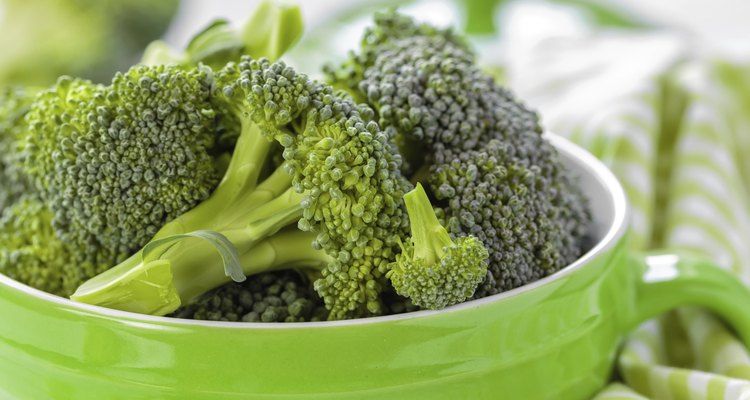
YelenaYemchuk/iStock/Getty Images
Magnesium and phosphorus are both essential minerals that are abundant in the body, particularly bone, reports the National Institutes of Health and the National Kidney Foundation. Besides promoting bone health, these minerals are important for numerous physiological roles in the body. Consuming a wide assortment of green vegetables, beans and whole grains daily ensures you will meet your dietary needs for both minerals. Consult a registered dietitian for the best food options based on your energy needs.
Green Leafy Vegetables
Dark green leafy vegetables are sources of vitamins and minerals that are vital to health, including magnesium. Spinach, broccoli, kale and arugula are some examples of green leafy vegetables. Magnesium is found in chlorophyll, the green pigment that gives these vegetables their color, reports the National Institutes of Health. One cup of cooked spinach contains 107 milligrams of magnesium and 101 milligrams of phosphorous, according to the USDA National Nutrient Database. Green leafy vegetables may be added to any green salad or main course dish.
Beans & Nuts
A variety of beans and nuts are sources of both minerals, magnesium and phosphorus. Nuts such as almonds and cashews are some of the best sources. One ounce of dry roasted almonds contains 79 milligrams of magnesium and 134 milligrams of phosphorous, reports the USDA. Baked beans, black beans, kidney beans, lentils and soy beans are examples of beans that contain good amounts of both minerals, according to The National Kidney Foundation. Besides magnesium and phosphorus, beans and nuts also provide the body with essential vitamins, fiber and essential fatty acids.
Whole Grains
Whole grain products, wheat bran and wheat germ are also good examples of foods rich in magnesium and phosphorus. White processed or refined flour is void of these minerals because the germ and bran are extracted, therefore grains must be whole and unrefined, according to the NIH. Some examples of whole grain products include bread, oatmeal and cereals. One cup of oatmeal contains 63 milligrams of magnesium and 180 milligrams of phosphorous, reports the USDA.
Dairy
Dairy products like milk, cheese, cottage cheese and yogurt contain both minerals, according to the National Kidney Foundation. The USDA reports that one cup of non-fat milk contains 27 milligrams of magnesium and 247 milligrams of phosphorous. Choose skim or low-fat dairy products to limit intake of saturated fat.
Related Articles

Vitamins for Mental Alertness

Food Sources of Betaine
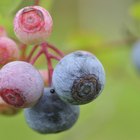
Nutrition Information on Blueberries

Nutritional Facts of Fava Beans

Foods to Prevent Jaundice

A List of Foods That Contain Choline

Zinc & Copper for Aging Skin

L-Lysine for Hair Growth

Iron Rich Indian Foods

B-6, Zinc & Acne
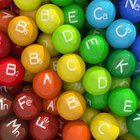
What Vitamins Help the Liver?

The Nutrition of 15-Bean Soup
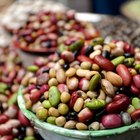
Foods High in Fiber & Calcium

Arginine for Hair Growth

Is Zinc Good for Hair Growth?

Almonds and Magnesium

Copper Peptides Side Effects

How to Freeze Lentils
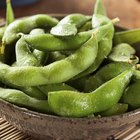
The Nutritional Value of Edamame Beans

Fruits & Vegetables Rich in Potassium ...
References
- The National Kidney Foundation: Phosphorous and Your CKD Diet
- Medline Plus: Magnesium in Diet
- USDA National Nutrient Database: Spinach, Cooked, Boiled, Drained, Without Salt
- USDA National Nutrient Database: Nuts, Almonds, Dry Roasted
- USDA National Nutrient Database: Cereals, Oats, Regular and Quick, Unenriched, Cooked With Water
- USDA National Nutrient Database: Milk, Non-Fat, Fluid, With Vitamin A and D Added
Writer Bio
Anthony Isaac Palacios has been a professional writer for more than five years for various media including magazine, newspaper and the Internet. He has a Master of Science in dietetics and nutrition and specializes in health and nutrition articles for the general public. Palacios enjoys cooking with wine, and sometimes even adding it to the food.
Photo Credits
YelenaYemchuk/iStock/Getty Images